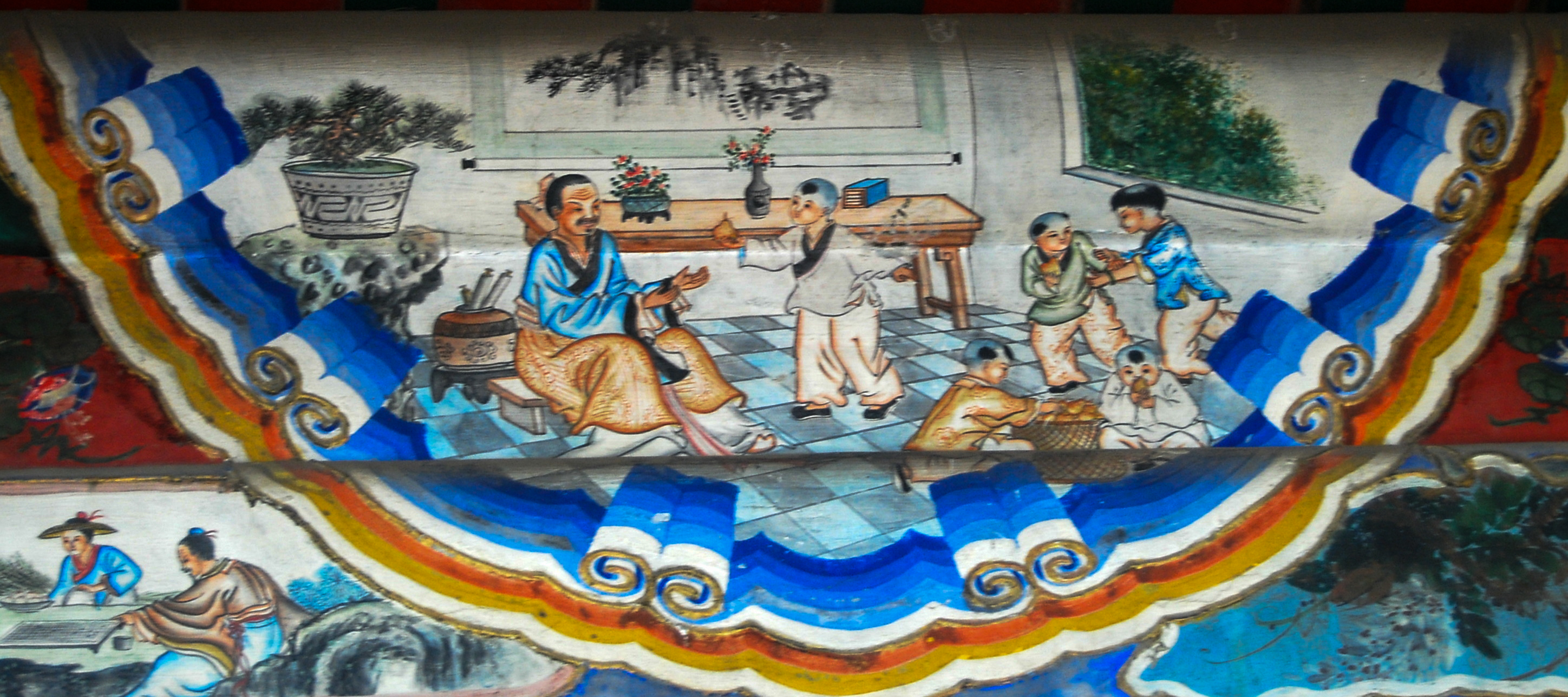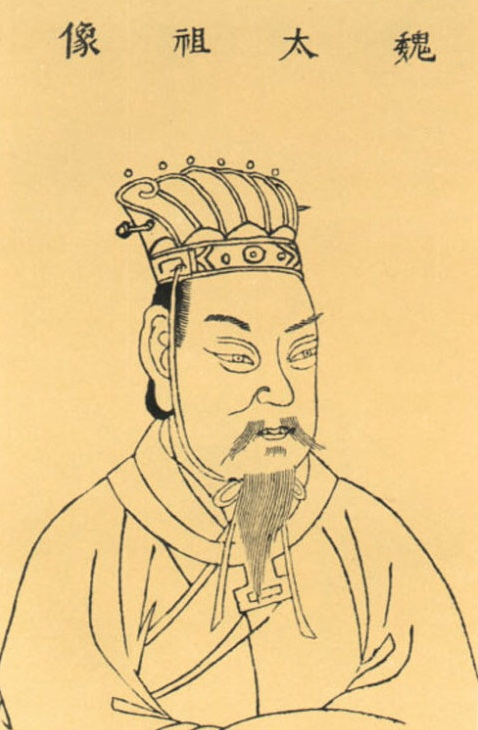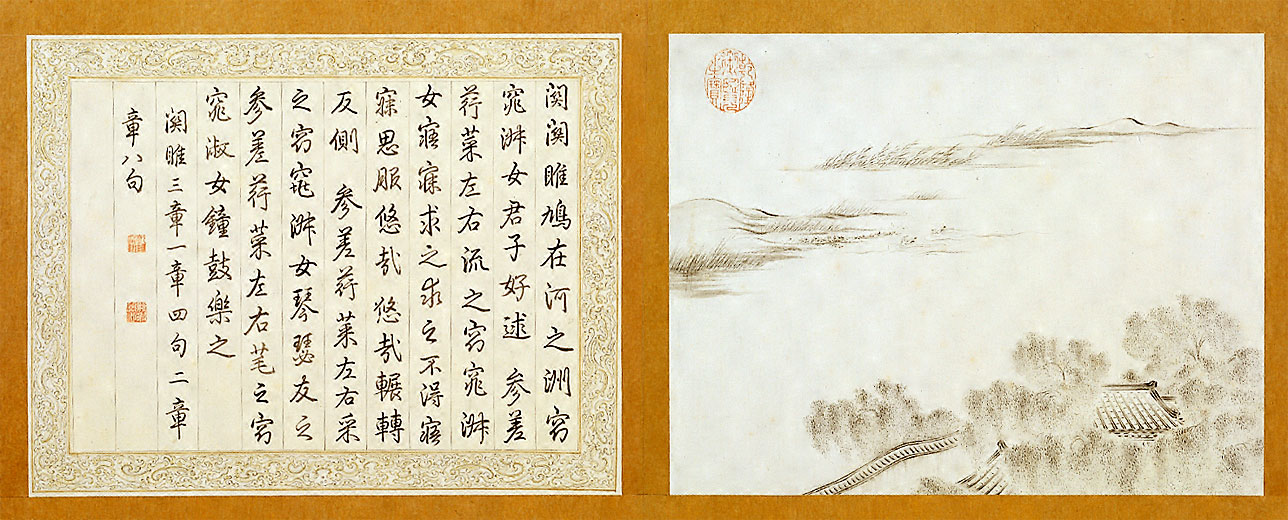|
Jian'an Poetry
Jian'an poetry or Chien-an poetry (), refers to the styles of Chinese poetry particularly associated with the end of the Han dynasty and the beginning of the Six Dynasties era of China. This poetry category is particularly important because, in the case of the Jian'an poetic developments, there is a special difficulty in matching the chronology of changes in poetry with the usual Chinese dynastic chronology based on the political leadership of the times. For example, according to Burton Watson, the first major poet of the new '' shi'' style that emerged at this time was Cao Zhi, one of the sons of Cao Cao,Watson, 19 a family which came into power at the end of Han and developed further during the Three Kingdoms era of the Six Dynasties period. Time period The term "Jian'an poetry" covers the final years at the end of the Han dynasty and during which the Cao family was rising, or risen, to prominence were known as the Jian'an era (196–220), the penultimate era of Emperor Xian: t ... [...More Info...] [...Related Items...] OR: [Wikipedia] [Google] [Baidu] |
Kong Rong
Kong Rong () (151/153 – 26 September 208), courtesy name Wenju, was a Chinese poet, politician, and minor warlord who lived during the late Eastern Han dynasty of China. He was a 20th generation descendant of Confucius. As he was once the Chancellor of Beihai State, he was also known as Kong Beihai. He was defeated by Yuan Tan in 196 and escaped to the capital Xuchang. For being a political opponent of Cao Cao and humiliating him on multiple occasions, Kong Rong was eventually put to death on various charges. Famed for his quick wits and elaborate literary style, Kong Rong was ranked among the Seven Scholars of Jian'an, a group of representative literati of his time. However, most of his works had been lost. Those that survived can be found in compilations from the Ming and Qing dynasties. A well-known story commonly used to educate children – even in contemporary times – on the values of courtesy and fraternal love involves a four-year-old Kong Rong giving u ... [...More Info...] [...Related Items...] OR: [Wikipedia] [Google] [Baidu] |
The Quatrain Of Seven Steps
The ''Seven Steps Verse'', also known as the ''Quatrain of Seven Steps'' (), is a highly allegorical poem that is usually attributed to the poet Cao Zhi. Background During the life of the great warlord Cao Cao who dominated northern China towards the end of the Han dynasty, he had shown favor to his third son Cao Zhi due to his intelligence and literary talents. Cao Cao considered making him heir and Cao Zhi had support from a significant fraction of his father's court, even though he was one of Cao Cao's younger sons. However, because Cao Zhi was negligent of decorum and his father's decrees, he eventually disappointed his father and the position of heir went to his elder brother Cao Pi. After Cao Cao's death in 220, Cao Pi would remove all his brothers, Cao Zhi included, from the capital to send them to their fiefs to ensure they would not be a threat to his power. The poem is set against this historical background, although the poem itself and the anecdote attached to it are ... [...More Info...] [...Related Items...] OR: [Wikipedia] [Google] [Baidu] |
Six Dynasties Poetry
Six Dynasties poetry () refers to the types or styles of poetry particularly associated with the Six Dynasties era of Chinese history (220–589 CE). This poetry reflects one of the poetry world's more important flowerings, as well as being a unique period in Classical Chinese poetry, which, over this time period, developed a poetry with special emphasis on romantic love, gender roles, and human relationships. The Six Dynasties era is sometimes known as the "Age of Fragmentation", because China as a whole through this period lacked unification as a state, at least for any extended period of time; and, instead, many states rose and fell, often overlapping in existence with other states. Which of the various states and dynasties constituted the "6" dynasties of the Six Dynasties period varies somewhat according to which of the traditional selection criteria are chosen. The Six Dynasties era covers several somewhat overlapping main periods including all of the following: the Three Kingd ... [...More Info...] [...Related Items...] OR: [Wikipedia] [Google] [Baidu] |
Seven Scholars Of Jian'an
Seven scholars of Jian'an or Chien-an (), also translated as the "seven philosophers or masters of Jian'an", were a group of seven Chinese intellectuals of the late Eastern Han dynasty. The name was coined by Cao Pi. The Jian'an era was the era from 196–220 during the reign of Emperor Xian. Known as the time of unrest preceding the Three Kingdoms era, the period gained popularity in the East Asian culture. The seven scholars are Wang Can, Chen Lin, Ruan Yu (阮瑀), Liu Zhen (劉楨), Xu Gan, (應瑒), and Kong Rong. Ruan Yu was the father of Ruan Ji, one of the Seven Sages of the Bamboo Grove. See also * Jian'an poetry * ''Yuefu ''Yuefu'' are Chinese poems composed in a folk song style. The term originally literally meant " Music Bureau", a reference to the imperial Chinese governmental organization(s) originally charged with collecting or writing the lyrics, later the ...'' References {{Reflist * Jian'an poetry ... [...More Info...] [...Related Items...] OR: [Wikipedia] [Google] [Baidu] |
Ruan Ji
Ruan Ji (210–263), courtesy name Sizong, was a Chinese musician, poet, and military officer who lived in the late Eastern Han dynasty and Three Kingdoms period. He was one of the Seven Sages of the Bamboo Grove. The guqin melody ''Jiukuang'' ( 'Drunken ecstasy', or 'Wine-mad') is believed to have been composed by him. At one time an infantry colonel, he was also known as Ruan Bubing (; 'Ruan of the infantry'). Life Ruan Ji was born in Chenliu (in the southern part of modern-day Kaifeng, Henan). His father was Ruan Yu, one of the famed Seven Scholars of Jian'an who were promoted by the Cao clan in the Jian'an poetry era. The Ruan family were loyal to the Cao Wei, as opposed to the Sima family; however their moral convictions and willingness to speak out generally outmatched their actual military or political power. It is fair to say that Ruan Ji was born into peril, his time period being the Period of Disunity. Ruan Ji was poetically part of both the poetry of the Jian'an pe ... [...More Info...] [...Related Items...] OR: [Wikipedia] [Google] [Baidu] |
Poetry Of Cao Cao
Cao Cao (155–220) was a warlord who rose to power towards the final years of the Eastern Han dynasty (25–220 CE) and became the ''de facto'' head of government in China. He laid the foundation for what was to become the state of Cao Wei (220–265), founded by his son and successor Cao Pi, in the Three Kingdoms period (220–280). Poetry, among other things, was one of his cultural legacies. Overview Cao Cao was an accomplished poet, as were his sons Cao Pi and Cao Zhi. Cao Cao was also a patron of poets such as Xu Gan. Of Cao Cao's works, only a handful remain today. His verses, unpretentious yet profound, helped to reshape the poetic style of his time and beyond, eventually contributing to the poetry styles associated with Tang dynasty poetry. Cao Cao, Cao Pi and Cao Zhi are known collectively as the "Three Caos". The Three Caos' poetry, together with additional poets, eventually developed into the ''Jian'an'' style: Jian'an was the era name for the period from 196 to 22 ... [...More Info...] [...Related Items...] OR: [Wikipedia] [Google] [Baidu] |
Classical Chinese Poetry
Classical Chinese poetry is traditional Chinese poetry written in Classical Chinese and typified by certain traditional forms, or modes; traditional genres; and connections with particular historical periods, such as the poetry of the Tang dynasty. The existence of classical Chinese poetry is documented at least as early as the publication of the ''Classic of Poetry'' (''Shijing''). Various combinations of forms and genres have developed over the ages. Many or most of these poetic forms were developed by the end of the Tang dynasty, in 907 CE. The use and development of Classical Chinese poetry actively continued up until the May Fourth Movement, in 1919, and is still developed even today. Poetry created during this period of more-or-less continuous development displays a great deal of diversity – categorized by both major historical periods and by dynastic periods (the traditional Chinese historical method). Another key aspect of Classical Chinese poetry is its intense i ... [...More Info...] [...Related Items...] OR: [Wikipedia] [Google] [Baidu] |
Writer's Voice
In literature, writing style is the manner of expressing thought in language characteristic of an individual, period, school, or nation. Thus, style is a term that may refer, at one and the same time, to singular aspects of an individual's writing habits or a particular document and to aspects that go well-beyond the individual writer. Beyond the essential elements of spelling, grammar, and punctuation, writing style is the choice of words, sentence structure, and paragraph structure, used to convey the meaning effectively. The former are referred to as ''rules'', ''elements'', ''essentials'', ''mechanics'', or ''handbook''; the latter are referred to as ''style'', or ''rhetoric''. The rules are about ''what'' a writer does; style is about ''how'' the writer does it. While following the rules drawn from established English usage, a writer has great flexibility in how to express a concept. Some have suggested that the point of writing style is to: * express the message to the reade ... [...More Info...] [...Related Items...] OR: [Wikipedia] [Google] [Baidu] |
Tang Poetry
Tang poetry () refers to poetry written in or around the time of or in the characteristic style of China's Tang dynasty, (June 18, 618 – June 4, 907, including the 690–705 reign of Wu Zetian) and/or follows a certain style, often considered as the Golden Age of Chinese poetry. The ''Complete Tang Poems'' includes over 48,900 poems written by over 2,200 authors. During the Tang dynasty, poetry continued to be an important part of social life at all levels of society. Scholars were required to master poetry for the civil service exams, but the art was theoretically available to everyone. This led to a large record of poetry and poets, a partial record of which survives today. The two most famous poets of the period were Li Bai and Du Fu. The Qing dynasty selection, ''Three Hundred Tang Poems'', has made Tang poetry familiar to educated Chinese in modern times. Periodization The periodization scheme employed in this article is the one detailed by the Ming dynasty scholar Gao B ... [...More Info...] [...Related Items...] OR: [Wikipedia] [Google] [Baidu] |
Music Bureau
The Music Bureau (Traditional Chinese character, Traditional Chinese: 樂府; Simplified Chinese character, Simplified Chinese: 乐府; Pinyin, Hanyu Pinyin: ''yuèfǔ'', and sometimes known as the "Imperial Music Bureau") served in the capacity of an organ of various imperial government bureaucracies of China: discontinuously and in various incarnations, the Music Bureau was charged directly, by the emperor (or other monarchical ruler), or indirectly, through the royal (or imperial) government to perform various tasks related to music, poetry, entertainment, or religious worship. These tasks included both musical and lyrical research and development, and also directing performances. The existence of a Music Bureau was typical of various Chinese dynasties, though the Music Bureau's prominence and influence may have peaked during the reign of Han dynasty emperor Emperor Wu of Han, Wu, who was especially interested in such activities and engaged himself accordingly. The mission of th ... [...More Info...] [...Related Items...] OR: [Wikipedia] [Google] [Baidu] |
Fu (poetry)
''Fu'' (), often translated "rhapsody" or "poetic exposition", is a form of Chinese rhymed prose that was the dominant literary form in China during the Han dynasty (206 BCAD220). ''Fu'' are intermediary pieces between poetry and prose in which a place, object, feeling, or other subject is described and rhapsodized in exhaustive detail and from as many angles as possible. They were not sung like songs, but were recited or chanted. The distinguishing characteristics of ''fu'' include alternating rhyme and prose, varying line lengths, close alliteration, onomatopoeia, loose parallelism, and extensive cataloging of their topics. Classical ''fu'' composers tended to use as wide a vocabulary as possible in their compositions, and therefore ''fu'' often contain rare and archaic Chinese words and characters. The ''fu'' genre came into being around the 3rd to 2nd centuries BC and continued to be regularly used into the Song dynasty (9601279). ''Fu'' were used as grand praises ... [...More Info...] [...Related Items...] OR: [Wikipedia] [Google] [Baidu] |






